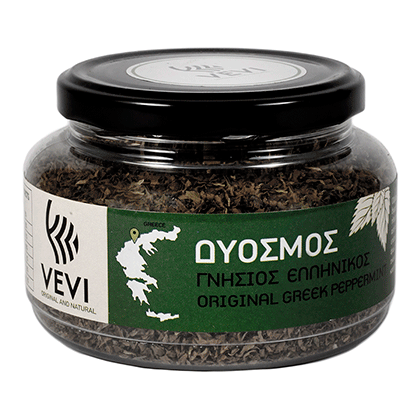
Spearmint herb (garden mint or common mint) has long been reputed for its characteristic aroma it imparts to the recipes. The least pungent and subtle among the species of the mint family, this unique herb is one of chef’s favorite culinary ingredients all over the world.
Garden Mint herb botanically belongs to the family of Lamiaceae, in the Genus: Mentha. Scientific name: Mentha spicata.
Spearmint is a branching perennial herb of Mediterranean origin. It is widely used across Europe and in large parts of Asia and Africa in flavored drinks, salads, confectionary, and as a garnish to recipes.
The herb grows easily in fertile, moist and loose soil conditions. It spreads through a wide network of underground runners. Generally, small stems (divisions) are planted to propagate. It reaches about 75 cm in height and bears oppositely arranged leaves all along its thick square stem. Spearmint leaves are deep green, deeply-veined, oval in shape with pointed ends and serrated margins. Slim pointed spikes of mauve flowers appear during late summer.
There are at least 20 species of spearmint, and their hybrids exist. However, it is diificult to classify them because of their variability and readiness to hybridize with each other. Here are some mint herbs apart from the popular peppermint and watermint;
-
Pineapple mint (M.suaveolens),
-
Ginger mint (M. x gentilis),
-
Japanese mint M. arvensis var.piperascens),
-
Corn mint (M. arvensis),
-
Bergamot or horsemint (M. Piperita var.citrata).
Health benefits of spearmint
-
Spearmint is pleasantly aromatic herb, packed with numerous health benefiting vitamins, antioxidants, and phytonutrients.
-
Its leaves and herb parts carry essential oil, menthol. Unlike in peppermint, spearmint leaves compose only small amounts of menthol, 0.5% compared to that 40% in peppermint. Less menthol content would make this herb least pungent and subtly fragrant herb in the mint family.
-
The herb has low calories (about 43 calories per 100 g) and contains zero cholesterol.
-
The chief essential oil in spearmint is menthol. Other important chemical components of spearmint are alpha-pinene, ß-pinene, carvone, cineole, linalool, limonene, myrcene and caryophyllene. These compounds in mint help relieve fatigue and stress.
-
The herb parts are also very good in minerals like potassium, calcium, manganese, iron (148% of RDA), and magnesium. Iron is essential for enzymes in cellular metabolism and synthesis of hemoglobin. Potassium is an important component of cell and body fluids that helps control heart rate and blood pressure. The human body utilizes manganese as a co-factor for the antioxidant enzyme, superoxide dismutase.
-
Further, the herb is also rich in many antioxidant vitamins, including vitamin-A (provides 4054 IU or 135% of RDA), β-carotene, vitamin-C, folates (26% of RDA), vitamin B-6 (pyridoxine), riboflavin and thiamin.
Medicinal uses
Almost all parts of spear mint herb found a place in various traditional as well in modern medicine.
-
The herb decoction is an excellent remedy for minor ailments such as headaches, nervous strain, fatigue, and stress, as well as for the respiratory problems; help to relieve asthma, bronchitis, and catarrh.
-
It is very useful to deal with digestive problems, including nausea, flatulence, and hiccups as it relaxes the stomach muscles.
-
The essential oil, menthol, has analgesic, local anaesthetic, and counterirritant properties. Menthol also found application in the preparation of toothpaste and mouth fresheners.
-
On the skin, when used as cream or lotion, it may help relieve itching, dermatitis, and hives.
-
Spearmint oil is used as blended massage oil and in the aromatic therapy to help relieve headaches, stress, fatigue, and nervous conditions and to relieve itching.
-
When taken in limits, spearmint tea can be used safely in pregnancy. In women, it helps reduce unwanted hairs through its anti-androgenic properties.

